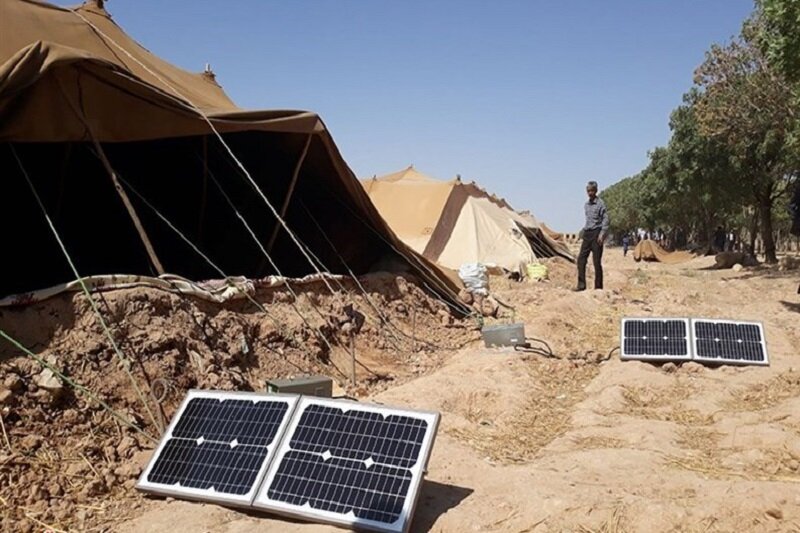
Plan for supplying nomadic households with mobile PV systems underway

According to the program’s Executive Director Ali Chehel-Amirani, the plan is set to be completed by the Iranian calendar year of 1400 (starts in March 2021), the portal of the Energy Ministry (known as Paven) reported on Monday.
Pointing to the fact that since the 1970s Islamic revolution, every day four villages have been connected to the national power network, the official said, “The number of villages connected to the electricity grid has increased 13 times since the revolution and now exceeds 57,350.”
“During the last six years, 35 trillion rials (about $834 million) has been spent for development, maintenance and upgrading of the rural electricity grid and electricity supply to villages without electricity, 3.5 times more than the figure for six years ago,” Chehel-Amirani added.
He further noted that the country’s electricity network has been expanded by 250,000 kilometers to supply electricity to 21.5 million people in rural areas, adding that for the current year, the ministry has planned for spending 15 trillion rials (about $357 million) for supplying electricity to 400 new villages as well as development, upgrading and maintenance of existing rural electricity networks.
Referring to the fact that nearly 99.7 percent of the country’s rural population are currently supplied with electricity, he said “According to the information provided by the International Energy Agency (IEA), this figure is 86 percent in Central and South America, 85 percent in Asia, 78 percent in the Middle East and 36 percent in Africa.”
“Our country is in very good condition in terms of rural electricity supply,” he added.


Trump weighs using $2 billion in CHIPS Act funding for critical minerals

Codelco cuts 2025 copper forecast after El Teniente mine collapse

Electra converts debt, launches $30M raise to jumpstart stalled cobalt refinery

Barrick’s Reko Diq in line for $410M ADB backing

Abcourt readies Sleeping Giant mill to pour first gold since 2014

Nevada army depot to serve as base for first US strategic minerals stockpile

SQM boosts lithium supply plans as prices flick higher

Viridis unveils 200Mt initial reserve for Brazil rare earth project

Tailings could meet much of US critical mineral demand – study

Kyrgyzstan kicks off underground gold mining at Kumtor

Kyrgyzstan kicks off underground gold mining at Kumtor

KoBold Metals granted lithium exploration rights in Congo

Freeport Indonesia to wrap up Gresik plant repairs by early September

Energy Fuels soars on Vulcan Elements partnership

Northern Dynasty sticks to proposal in battle to lift Pebble mine veto

Giustra-backed mining firm teams up with informal miners in Colombia

Critical Metals signs agreement to supply rare earth to US government-funded facility

China extends rare earth controls to imported material

Galan Lithium proceeds with $13M financing for Argentina project

Kyrgyzstan kicks off underground gold mining at Kumtor

Freeport Indonesia to wrap up Gresik plant repairs by early September

Energy Fuels soars on Vulcan Elements partnership

Northern Dynasty sticks to proposal in battle to lift Pebble mine veto

Giustra-backed mining firm teams up with informal miners in Colombia

Critical Metals signs agreement to supply rare earth to US government-funded facility

China extends rare earth controls to imported material

Galan Lithium proceeds with $13M financing for Argentina project

Silver price touches $39 as market weighs rate cut outlook

















